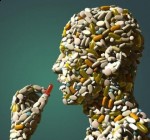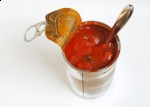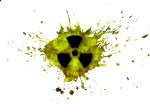The health benefits of Lycium fruit, otherwise known as Goji berries are nearly unmatched by any other berry. While Western countries are just recently discovering these incredible antioxidants, Chinese medicine has been using them for centuries. Many foods and herbs overlap in Traditional Chinese Medicine, (TCM) and goji berries is one of these, a food used in herbal remedies. Today we are finding goji in energy drinks, energy bars and as a stand alone dried fruit in many health food stores.
A recent study at the University of Basel in Switzerland showed lycium to have " antioxidative properties and some interesting pharmacological activities in the context of age related diseases such as atherosclerosis and diabetes."1
Lycium berries have a long history of use in Chinese medicine. They are commonly seen in cooking recipes from soups to congee (hot cereal) to stews. Goji berries are known as a tonic herb for the blood, considered a liver protector and especially beneficial for the eyes.
In Sydney Australia a study of mice drinking goji berry juice was conducted. What the researchers found was the goji juice protected the mice against UV radiation induced skin damage because of its antioxidant activity. 2
Goji berries probably have more therapeutic value than we yet grasp. If you would like to read more studies you can always check out pubmed.com. Yet, before the age of the computer Chinese medicine understood the value in these little red berries and herbal formulas go back over a thousand years that have included lycium in herbal prescriptions for health. We've included it in our Energy Booster Herb Pack which is bases on an ancient Chinese herbal formula that has been used for "Wellness for Centuries".
_________________
References:
1. Nutr Res. 2009 Jan;29(1):19-25. Lycium barbarum (goji) juice improves in vivo antioxidant biomarkers in serum of healthy adults. Department of Pharmaceutical Sciences, Division of Pharmaceutical Biology, University of Basel, Basel, Switzerland.
2, Mice drinking goji berry juice (Lycium barbarum) are protected from UV radiation-induced skin damage via antioxidant pathways. Faculty of Veterinary Science, University of Sydney, Sydney, NSW 2006, Australia. PMID: 2035465


 Dear Friends, Moms, Sisters, Daughters, Aunts & Grandmothers,
Dear Friends, Moms, Sisters, Daughters, Aunts & Grandmothers,






